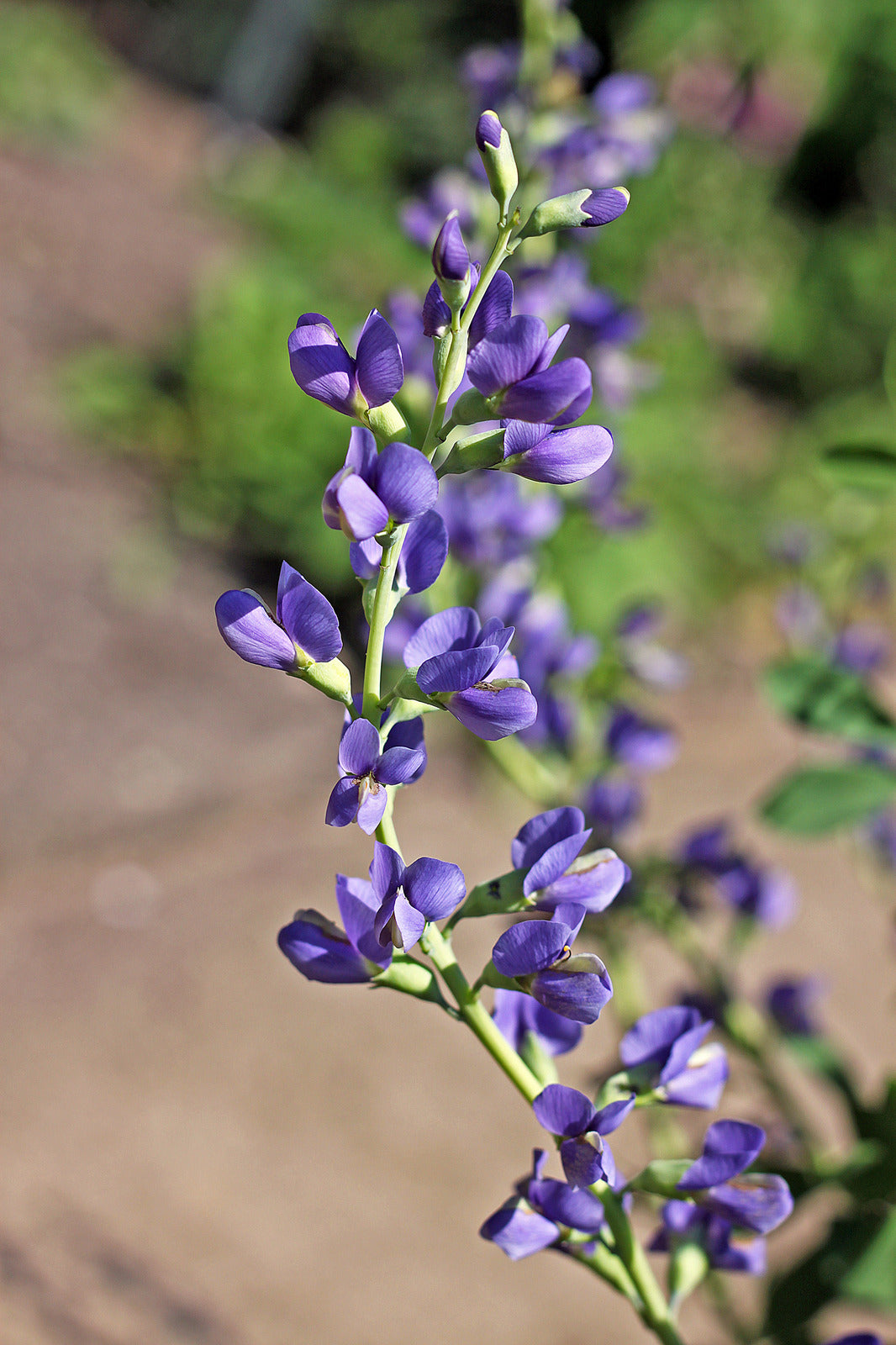BAPTISIA AUSTRALIS / BLUE FALSE INDIGO
- Regular price
-
$24.95 CAD - Regular price
-
- Sale price
-
$24.95 CAD
Couldn't load pickup availability
Delivery Fees
Delivery Policy
Enjoy FREE delivery on all orders over $149!
For orders between $80 and $149, a $18.99 delivery fee will apply.
Orders under $80 will be prompted to add more items to your cart.
BAPTISIA AUSTRALIS / BLUE FALSE INDIGO
A Robust, Long-Blooming Perennial with Stunning Blue Flowers
Baptisia australis, commonly known as Blue False Indigo, is a striking perennial that brings bold, upright form and vibrant blue blooms to the garden. Its towering spires of pea-like flowers appear in late spring to early summer, creating a show-stopping display of color. This hardy and low-maintenance plant thrives in full sun and well-drained soils, making it an excellent addition to perennial borders, meadows, or wildflower gardens. With its deep green foliage and long-lasting flowers, Blue False Indigo is a standout choice for adding both beauty and structure to your landscape.
Why Choose Blue False Indigo?
-
Vibrant Blue Flowers: Tall spires of rich blue flowers emerge in late spring to early summer, adding a pop of color to the garden.
-
Long-Lasting Blooms: Flowers last for several weeks, providing extended color in the garden and attracting pollinators such as bees and butterflies.
-
Low Maintenance: Once established, Blue False Indigo requires minimal care and is drought-tolerant, making it a perfect plant for low-maintenance gardens.
-
Resilient and Hardy: Cold-hardy and resistant to pests and diseases, this plant thrives in a variety of soil conditions.
Key Features
-
Flower Color: Deep blue, pea-like flowers with a yellow center, arranged in tall spires.
-
Foliage: Silvery-green, trifoliate leaves provide a pleasant contrast to the vibrant flowers and offer interest throughout the growing season.
-
Growth Habit: Clump-forming with an upright, bushy shape, typically reaching 3–4 feet tall and wide.
-
Deer & Rabbit Resistant: Not favored by deer or rabbits, making it a great option for gardens with these common pests.
Specifications
-
Plant Size: Typically grows 3–4 feet tall and 3 feet wide.
-
Hardiness: USDA Zones 3–9, suitable for various growing conditions.
-
Sunlight: Prefers full sun for optimal flowering and growth.
-
Soil Requirements: Well-drained, moderately fertile soil; tolerates poor soils once established.
Ideal Uses
-
Perennial Borders: Its upright form and bold flowers make it an excellent choice for the back of perennial borders.
-
Wildflower Gardens: Blue False Indigo is a perfect addition to wildflower gardens, adding height, color, and structure.
-
Meadows & Naturalized Areas: Its drought tolerance and low maintenance make it ideal for meadows or naturalized spaces.
-
Cut Flowers: The long-lasting blooms also make excellent cut flowers, adding lasting beauty to floral arrangements.
Baptisia australis, or Blue False Indigo, is a robust and striking perennial that delivers vibrant blooms, low maintenance, and resilience. Perfect for a variety of garden settings, this plant adds both color and structure, making it an essential addition to any sunny landscape.
NATIVE TO ONTARIO
Care Instructions
Different plants have different watering needs. Check the soil moisture by inserting your finger about an inch into the soil. If it feels dry, water the plant until the water drains from the bottom of the pot. Avoid overwatering, as it can lead to root rot.


BAPTISIA AUSTRALIS / BLUE FALSE INDIGO
- Regular price
-
$24.95 CAD - Regular price
-
- Sale price
-
$24.95 CAD


